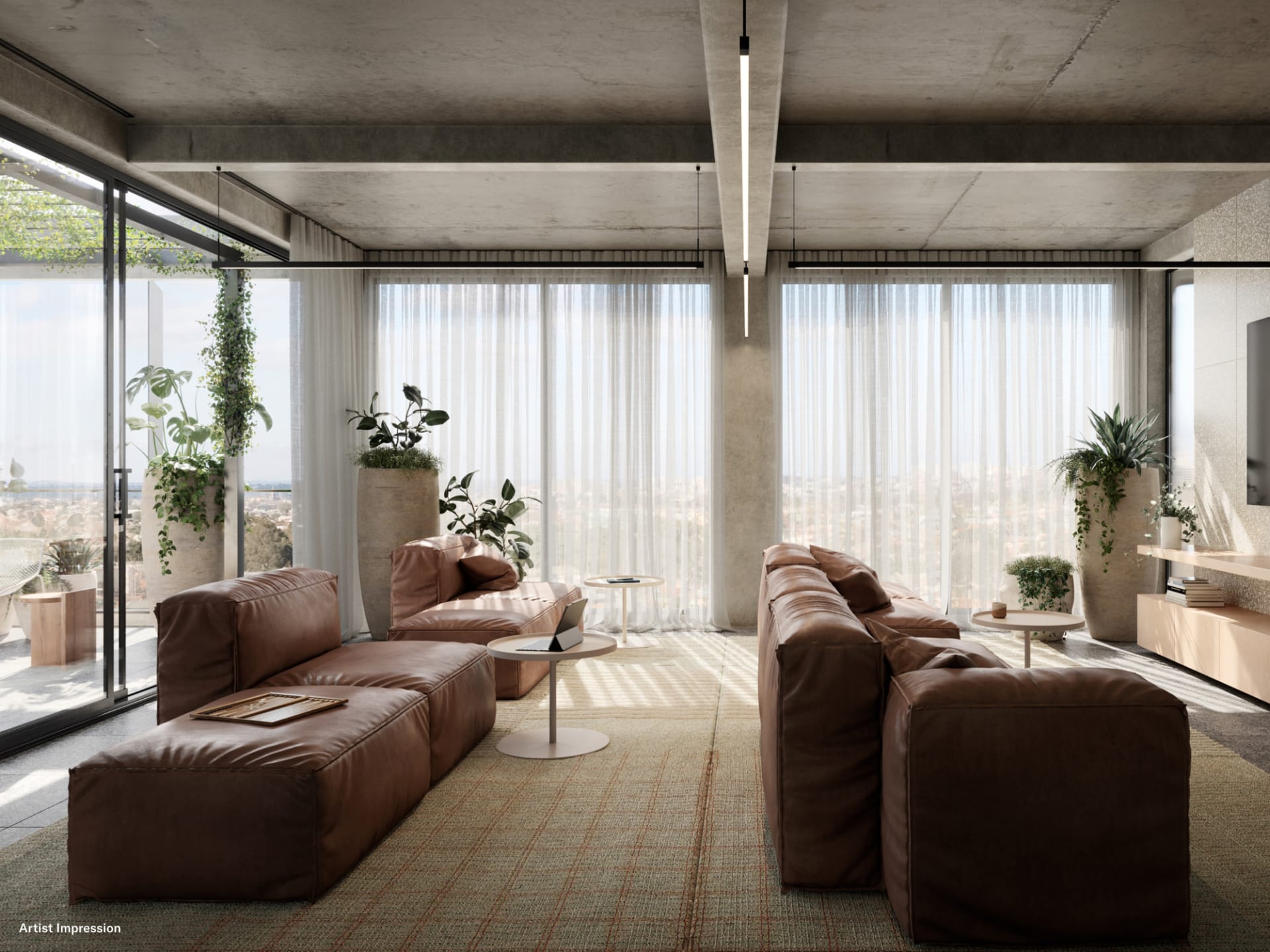Designed by a Brunswick local: Rothelowman’s Kylie Caruana discusses the design influences behind Canvas, Brunswick apartments

ID_Land’s collaboration with Rothelowman blends rough and smooth materiality and culminates into a beautiful expression of modern architecture.
Delivering 62 residences in one, two and three-bedroom configurations, Canvas pays homage to Brunswick’s industrial past.
The project’s sculptural façade fits perfectly into Barkly Street; its industrial form framed by geometric concrete grids that reinterprets the industrial regeneration of Brunswick.
Urban recently sat down with Rothelowman’s Kylie Caruana, who has worked in the architectural studio for 12 years, to discuss the Melbourne development.
MK: How many multi-residential projects has Rothelowman been contracted on within Victoria?
KC: During my 12 years at Rothelowman, we’ve been contracted on countless multi-residential projects (so I had some help to run the numbers). Rothelowman currently has 222 Active projects nationally with 132 Projects in Victoria alone, of these 81 are in planning and 45 have gained planning and are in various stages of construction. 92 of these are residential or have residential components. Historically Rothelowman has completed over 800 projects in Victoria, Queensland, New South Wales, South Australia, ACT and Western Australia.
MK: What spoke to you about Canvas in particular?
KC: Canvas was yet another highly collaborative project between ID Land and Rothelowman, to realise their first multi residential apartment building with an exceptional site in the epicentre of Brunswick. This was an opportunity for urban reconsolidation, in a well-connected precinct around existing culture. Having lived in Brunswick for many years and residing in neighbouring Northern suburbs my entire life, this was an opening to bring my community’s ideals to the table.
MK: What was the design brief from ID_Land for the project's architectural design?
KC: The design brief from day dot was open and progressive. Our special relationship with ID Land, based on high levels of trust and collaboration, meant the brief didn’t need to talk to specifics. We were to take an urban regeneration site and come up with a design concept for the future, whilst paying homage to the granular nature of the past. We framed our thinking - to embed our thirst for sustainability, balanced living, and to establish new links to the existing community.
MK: Where did you take your inspiration from?
KC: Primarily our inspiration came from the beauty and the eclectic and diverse culture we see, feel and experience within Brunswick. Tucked in a site with an industrial past and an artistic present, Canvas draws links from its surrounding tactile materiality, fluid forms, creative culture and lifestyle.
MK: How did you harmonise Canvas into the Barkly Streetscape?
KC: Very early in the piece, we brought together ideas on what we envisaged for the future urban topography of the area and what we would build upon for the future Brunswick community. Although there are three parts to our streetscape, the lines between our retail, commercial office and residential are blurred behind our façade grid. Our entry is complex, yet holistic whereby it invites patrons, employees, residents and visitors through the one naturally lit entrance.
These elements were then stitched together to create a Canvas. The development provides a sustainable living experience that culminates into a home for families, couples, and individuals.
MK: Were there any challenges during the design process that you had to overcome?
KC: What are maybe typically seen as challenges became opportunities to engage and have an honest and open dialogue with the planning authorities, taking them on the journey and together forming a collective example that exemplifies future-proofed planning outcomes and creates a precedent for future developments.
MK: How important are communal amenities in new developments, and why?
KC: Now more than ever the importance of communal amenity has come to the fore; people have never spent as much time in their apartments before and now they’re receiving a real education in design – seeing how the sun enters the rooms during the day, how much fresh air they receive and how they use outdoor space.
This is changing people’s attitudes and cementing what’s important to them. There’ll be a definite permanent mark left and we’ll be living differently in the future, with more flexible working, both from home and from the office. As a result, people will want greater liveable outdoor space and more personal space. People like the idea of having an escape and this kind of design will become even more popular because of what we’ve been through.
Though designed pre-COVID, Canvas has all the prerequisites for a post-pandemic world and the intrinsic changes it has brought to the way we live, work and play. With an extensive rooftop resident’s amenity floor, Canvas has the answer. Our communal rooftop includes internal and external spaces, work from home places, comfortable lounge areas, kitchen with entertainment dining, north and south facing open air terraces with spectacular views and shared gardens, all sustainably delivered.
MK: What have you tried to do in the design that the average homebuyer may not notice straight away?
KC: A project, be it commercial, residential or retail, isn’t about selling space; it’s about selling the intangibles – the opportunities, the lifestyle and the economic prospects these spaces can provide.
By managing spaces, sharing resources and hosting activities together, residents are empowered to contribute to the surrounding community and the world at large, creating greater connections and happier lives.



